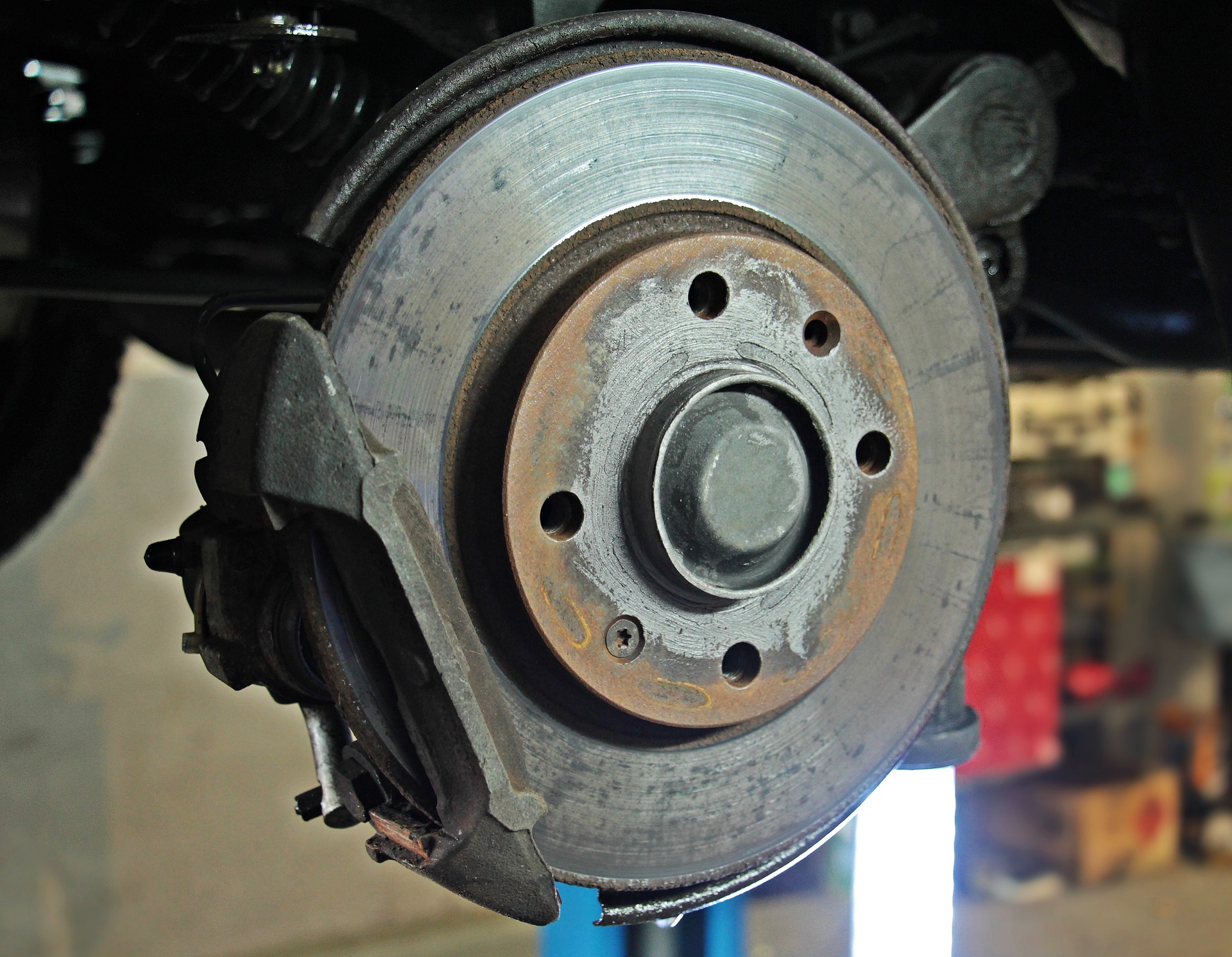
Image by NoName_13 from Pixabay
Many of our Vancouver customers ask, “Do brake pads need to be replaced with rotors at the same time?” They’ve heard that every time they get their pads replaced, the rotors should be replaced simultaneously. But is this necessarily true?
Let’s take a look at this hot-button issue in automotive repair. Replacing your rotors with every brake pad replacement can get expensive. But on the other hand, is there a safety issue to be concerned about? Our experts give their best advice so you can make the decision that’s best for your vehicle.
What Is the Function of Brake Pads and Rotors?
Brake pads and rotors work in concert to slow or stop your vehicle. Simply taking your foot off the gas isn’t enough to stop a car in most scenarios because of the momentum generated by the weight of the auto.
When you press the brake pedal, the pads exert pressure via the calipers on the rotors to slow wheel movement and reduce speed. Brake rotors are also known as brake discs because of their flat, circular shape, and they come in different designs based on the vehicle model. They’re attached to the axles, which hold a vehicle’s front and rear wheels.
How Long Do Brake Pads Last?
It’s generally recommended to replace the brake pads on your car or truck approximately every 16,000 to 32,000 kilometres. However, there are multiple factors that can produce earlier wear on brake pads.
You may have to replace them sooner if you drive in a lot of stop-and-go traffic where you’re applying the brake pedal frequently. Also, your braking style and the style of others who drive the vehicle can determine how quickly they wear. Slow, gentle braking tends to result in more gradual wear, while rapid, frantic braking at the last minute will wear down brake pads faster.
Where do you drive? There is a lot of rain and salt air in British Columbia and in the Maritime Provinces. The central provinces that see more snow may have more road salt and grit present. These elements can cause rust and degradation of your brakes as well.
Additionally, the quality of the brake pads you use can influence their longevity. It can be tempting to buy cheaper aftermarket brake pads, but you may wind up replacing them more often if they’re less durable. In the end, you may actually be paying more, once you factor in the cost of labor for more frequent brake pad replacements.
What are some signs your brake pads are due for replacement, whether they’ve hit the recommended milestones or not?
- Squeaking or squealing when you apply the brakes
- Taking longer than normal to stop the vehicle
- Pulling to one side when braking (can also be alignment)
- Brakes feeling soft or spongey when applying the pedal
- Dashboard panel light for brakes illuminated
Do Pads and Rotors Need to Be Replaced Together?
Brake rotors don’t usually need to be replaced as often as brake pads, especially on newer vehicles. Most manufacturers recommend replacing rotors roughly every 80,000 to 115,000 kilometres.
Like brake pads, though, there are reasons why you may want to replace them more often. The same driving patterns that cause premature wear on brake pads can cause your rotors to wear more rapidly. Your mechanic may notice worn spots or thinning on the rotors, indicating it’s time for a replacement lest you have a catastrophic brake failure.
You might also report that your vehicle vibrates or makes grinding noises when you apply the brakes. This is also a sign that the rotors are worn.
There is an intermediate step before completely replacing the rotors: rotor resurfacing. Sometimes small changes to the rotor’s surface can be honed to make it more even and better fitted with the brake pad and caliper. Your mechanic can tell you if this is a possibility or if the brake rotors are too far gone and must be replaced.
It’s important to note that brake pads and rotors replacement must be done on both sides of the axle. So, if you replace components on the front right, you need to do the front left at the same time. Also, your front brakes do more of the work in stopping your vehicle; they will usually need to be repaired more often than the rear brakes.
We mentioned labour costs above. Some drivers elect to have their rotors replaced at the same time as their brake pads if the rotors are somewhat close to needing replacement. That way, they’re only paying for one visit to the mechanic’s garage instead of two.
In summary, when considering whether brake rotors need to be replaced at the same time as your pads, the answer is it depends. It’s not a hard-and-fast rule that they must be done together, although sometimes that’s the best choice.
Talk to your mechanic about your driving habits, visual wear, signs of brake problems, and the maker’s recommendations for your specific vehicle. Together you can work out a replacement schedule that is both economical and safe.
